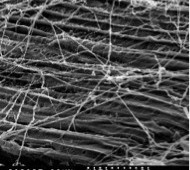Button Mushroom Marks Niche in Forest Carbon Storage
Many people know the button mushroom (Agaricusbisporus) as a tasty ingredient in their food. In the forest, though, this mushroom helps break down leaf litter in environments rich with humus, a mixture of soil and compost that contributes to the health of the microbial communities in, on and around the plant as well as the… [Read More]

